

Using machine learning, a function of artificial intelligence, the graded pain stimulation data of 461 subjects was categorized into three levels (no pain, moderate pain, and severe pain), features were extracted, and regression techniques were also applied to improve accuracy.
For subjects with relatively good fits, we were able to obtain approximately 80% perfect responses, and the overall accuracy improved to 71%. We are currently working to achieve even higher accuracy.
*Basic rights have been obtained for Patent No. 6249432, "Pain Measuring Device and Pain Measuring System."
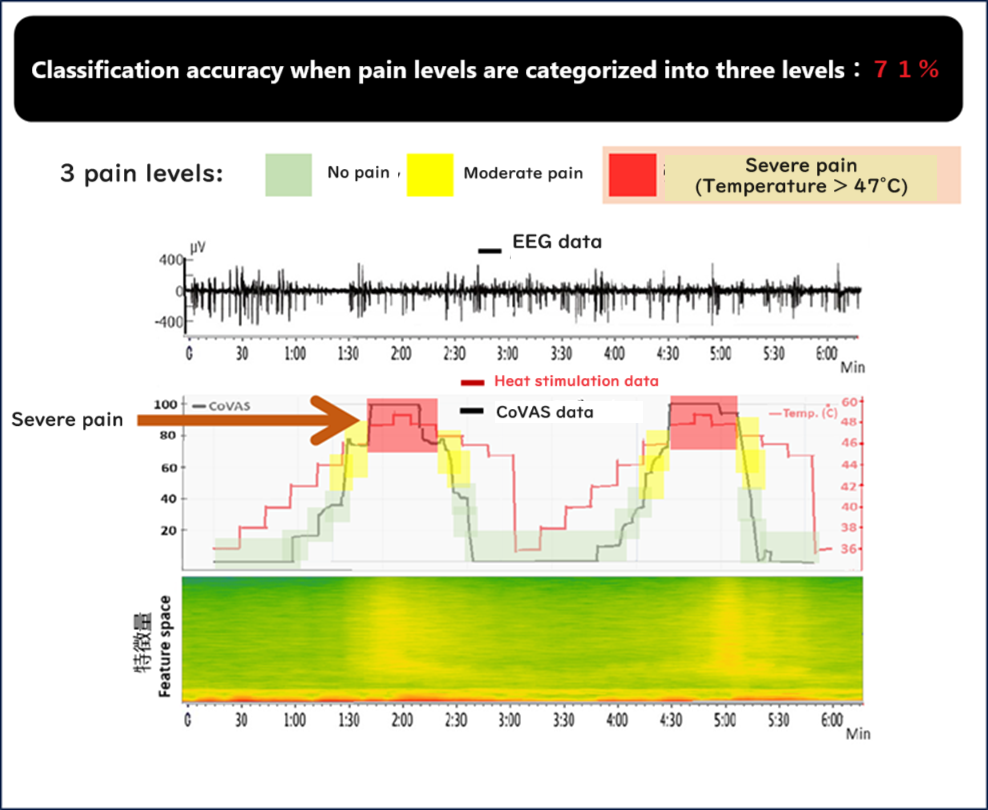
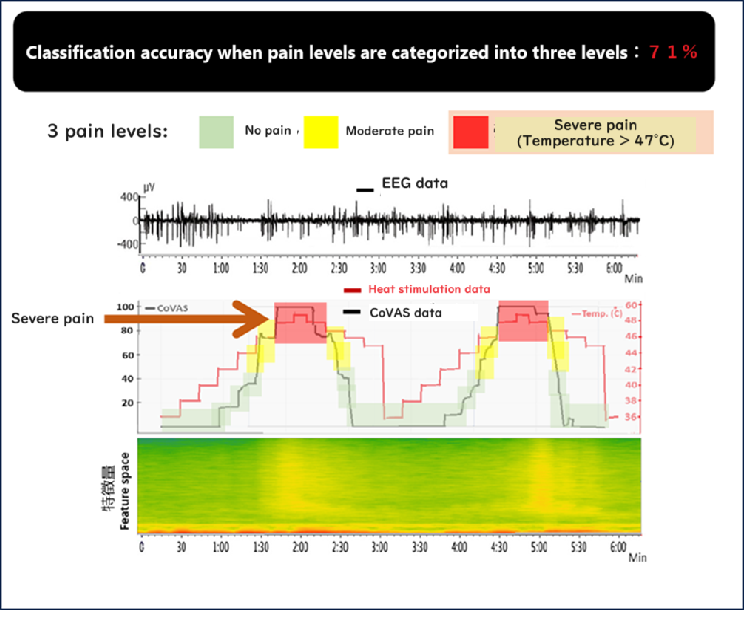


We used data from several experimental participants as training data to create a pain discrimination model. We then used frequency as a feature to estimate and determine the level of discomfort (level 2) pain that appears in the EEG of unused test data. At this stage, we are able to discriminate between unpleasant and non-pleasant pain about 70% of the time. Even if the pain is of the same level, we are able to extract from the EEG the component of pain that we really want to treat.
*Rights have been obtained for Patent No. 7179299 "Pain Classification and Momentary Pain Determination Using Sparse Modeling," and Patent No. 6664715 and Patent No. 7203388 "Discernment of Comfort/Discomfort."
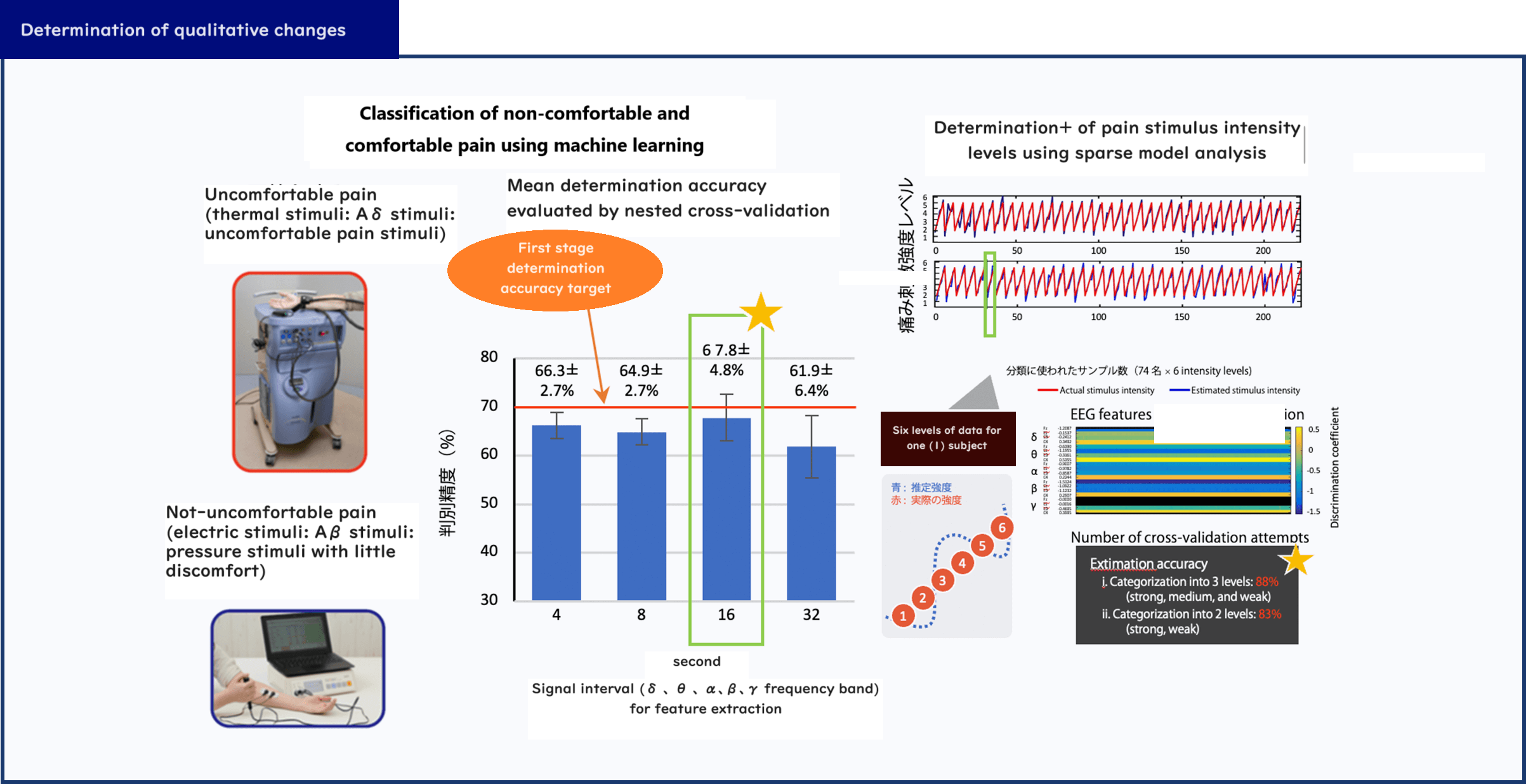



The intended users of our devices are patients who are prescribed analgesics. Therefore, we have to take into account the effects of analgesics from the development stage. On the other hand, however, the data we receive from the patients differ from person to person in terms of their medical conditions and painkiller prescriptions, making them unsuitable for development using artificial intelligence. In addition, for healthy participants, it is burdensome and undesirable from an ethical point of view to ask them to take analgesic medication before the experiment.
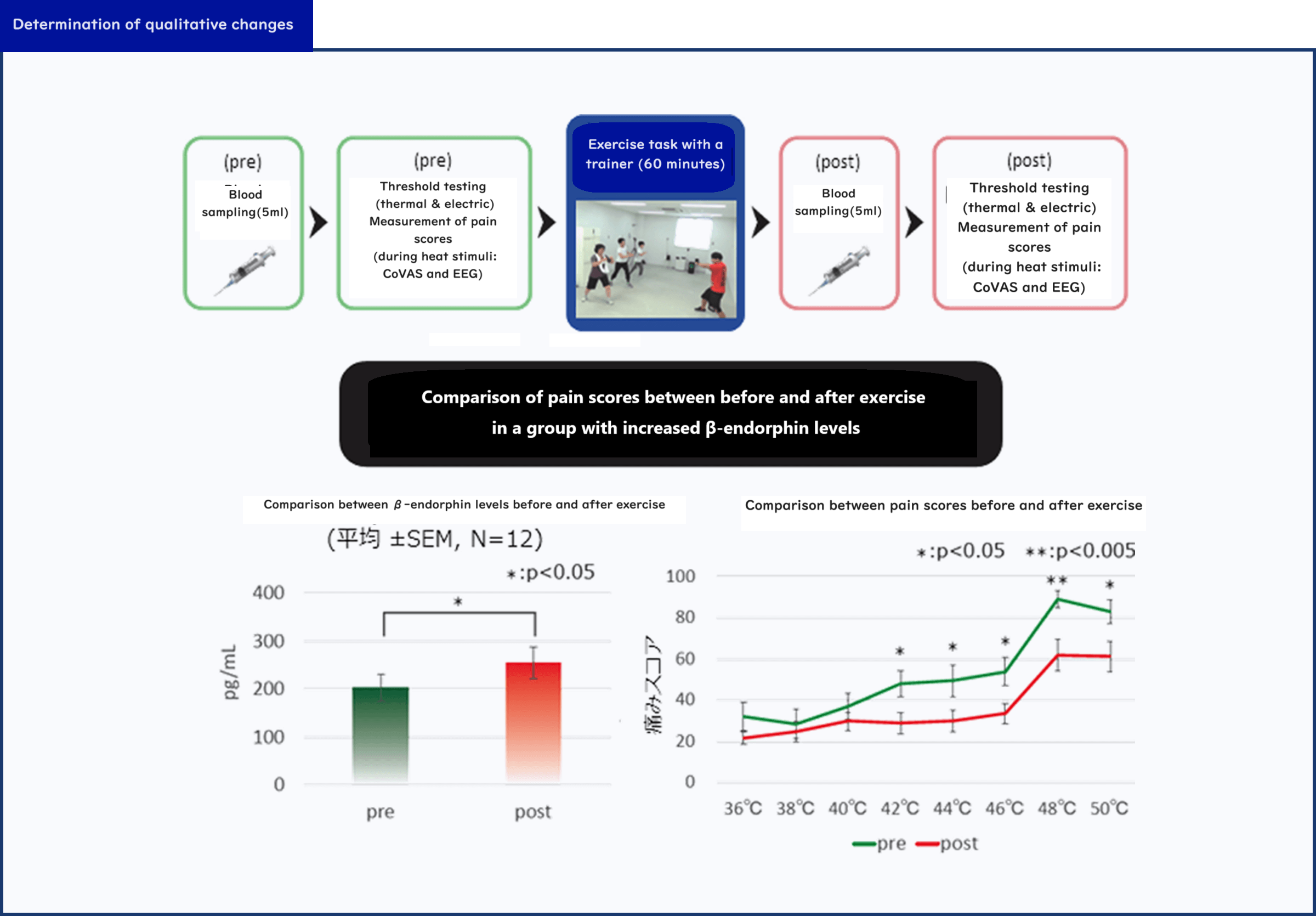



Using a method called LSTM (Long short-term memory), a type of deep learning, to evaluate EEG data during the period of pain caused by an injection, we confirmed that we could extract the components of pain from the brain signals during pain.
This result was selected as an excellent abstract at The 53rd Annual Meeting of the Japan Society of Pain Clinicians in 2019.
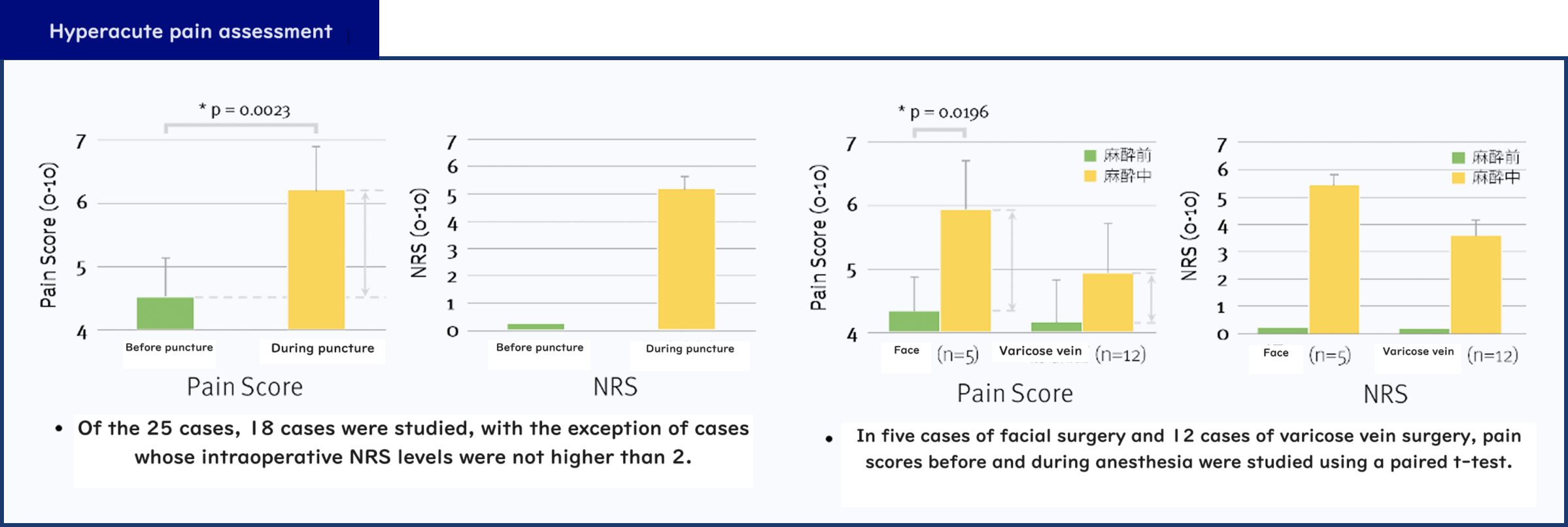
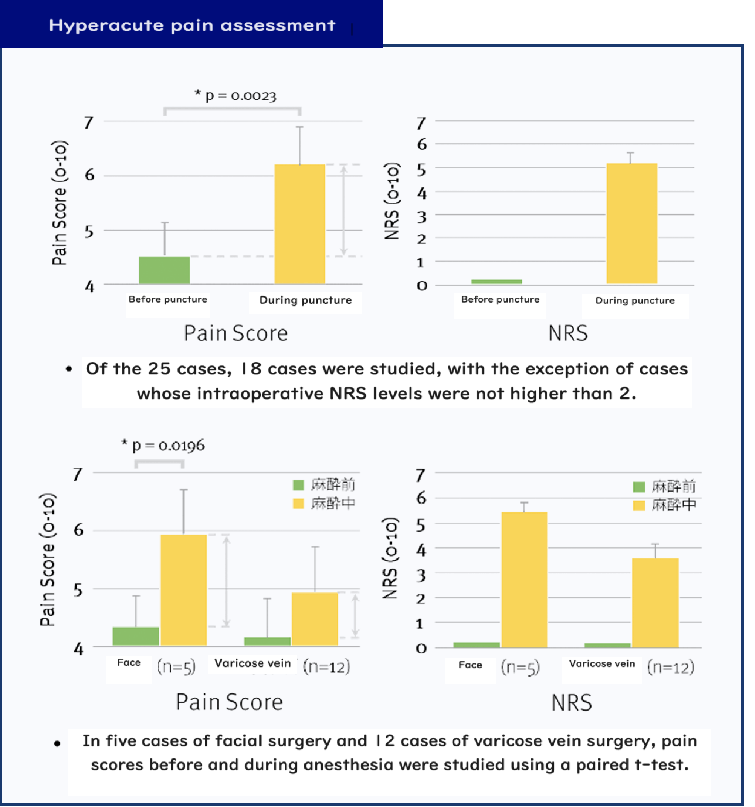


The "pain score" using machine learning produces a rating that is generally the same as the "NRS", or subjective rating, as reported by the patient him/herself. The applicability of this method to the objective evaluation of chronic pain has been confirmed in a preliminary study conducted with the cooperation of patients.

